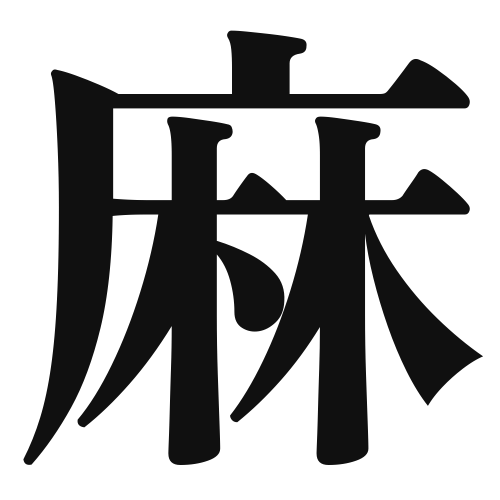1. Overview of Meaning
The kanji “麻” (pronounced “asa” in Japanese) primarily means “hemp” or “flax.” It refers to the plant used for making textiles, ropes, and other materials. Additionally, it can also denote something that is coarse or rough in texture.
2. Formation and Radical
The kanji “麻” is a phono-semantic compound (形声文字), which means it combines both a phonetic and a semantic component. The left part of the character is the radical “麻” itself, which relates to the meaning of the word, while the right part provides a phonetic hint.
The radical for “麻” is also “麻,” which is used in other kanji related to hemp and textiles.
3. Examples of Usage
Common words and phrases that include “麻” are:
- 麻布 (あさぬの, asanuno) – hemp cloth
- 麻薬 (まやく, mayaku) – narcotics (literally “hemp medicine”)
Example sentence in daily conversation:
「このシャツは麻でできています。」
(This shirt is made of hemp.)
4. Synonyms and Antonyms
Similar kanji with related meanings include:
- 綿 (わた, wata) – cotton (a different type of textile)
- 絹 (きぬ, kinu) – silk (another textile, but smoother and more luxurious)
Antonyms include:
- 柔らかい (やわらかい, yawarakai) – soft (as opposed to the rough texture associated with “麻”)
5. Cultural and Historical Background
The kanji “麻” has significant ties to Japanese culture, particularly in traditional textiles and crafts. Hemp has been used for centuries in Japan for making clothing, ropes, and even paper.
Proverbs and idiomatic expressions related to “麻” include:
- 麻の葉 (あさのは, asanohane) – “hemp leaves,” often used in traditional patterns and designs.
Overall, “麻” represents not only a material but also a part of Japan’s rich cultural heritage.
